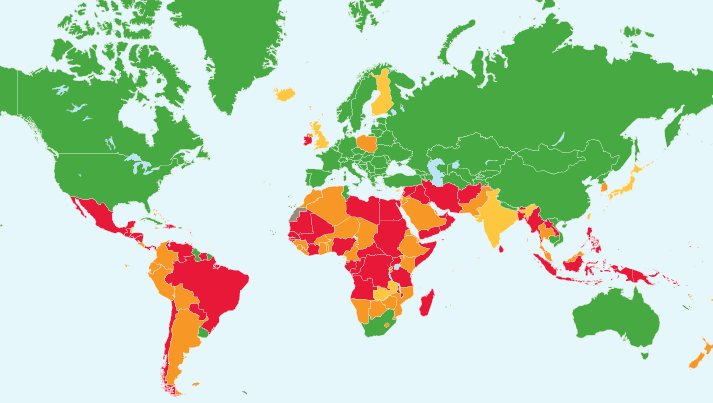A Map of Progress

Worldwide, abortion laws have been liberalizing over the last 20 years. And the momentum is only accelerating.
In a country like the United States, where attacks on a woman’s right to abortion are frequent, it sometimes seems that reproductive rights are everywhere under siege. Extremist politicians across the U.S. have been increasingly introducing regulations that impose medically unnecessary and expensive requirements upon abortion clinics—all with the aim of shutting them down entirely.
But legal trends worldwide tell a different story.
A new report and interactive map from the Center for Reproductive Rights offer good news for supporters of reproductive rights: Worldwide, abortion laws have been liberalizing over the last 20 years. And that progress is accelerating.
Today, in 74 countries—that’s 60 percent of the world’s population—women can access abortion services without restriction as to reason, or on broad grounds such as socioeconomic concerns. Since 1994, thanks to the tireless efforts of reproductive rights advocates, 35 countries—from South Africa to Uruguay to Nepal—have expanded the grounds on which women can legally access abortion services.
“We have seen countries that once threw women and doctors in jail for obtaining and performing abortions reverse themselves entirely,” says Center president and CEO Nancy Northup. “Today, they recognize abortion as a fundamental right that their governments must protect and guarantee.”
The successes of the last 20 years may be traced back to the 1994 International Conference on Population and Development, where delegates from 179 countries formally recognized for the first time that reproductive rights are human rights. The resulting Programme of Action has enabled advocates worldwide to address unsafe abortion and promote abortion access as a human rights imperative. Roughly 25 percent of the world’s population live in countries where abortion is prohibited altogether or only permitted where pregnancy poses a risk to the woman’s life. Fourteen percent reside in countries that permit abortion to preserve a woman’s health.
Countries that ban and criminalize abortion must take steps to remove these restrictions—women’s lives and health are at stake. As the World Health Organization (WHO) recognizes, restrictive laws don’t reduce the number of women seeking abortion services. Rather, they drive women to risk their lives and health by undergoing clandestine, unsafe procedures. Nearly 50,000 women die from complications of unsafe abortions every year.
Of course, having more liberal laws on the books is not always the same thing as having access to abortion services. Obstacles to access can include cost or procedural barriers such as mandatory waiting periods, third-party consent and notification requirements, and limits on the range of options (such as restrictions on medical abortion). It’s critical that governments ensure that abortion services are accessible to all women.
The significance of the World’s Abortion Laws map, and the accompanying report Twenty Years of Reform, goes beyond documenting which governments respect a woman’s right to make decisions about her own reproductive life. “The legal status of abortion is a measure of women’s equality,” says Johanna B. Fine, deputy director of the Global Legal Program at the Center for Reproductive Rights. “It’s a key indicator of how a society treats women.” Despite this progress, much remains to be done, particularly, as the map indicates, in the Global South. The strictest abortion laws are generally found in Africa and Latin America and the Caribbean—with some notable exceptions including Uruguay, South Africa, and Zambia. This is where activists will increasingly be turning their energies in the coming years.
Visit the interactive World’s Abortion Laws map website, which also includes the full text of abortion laws and compares the legal status of abortion in countries across the globe.
